Curious Questions: How do you tell the difference between a British bluebell and a Spanish bluebell?
Martin Fone delves into the beautiful bluebell, one of the great sights of Spring.

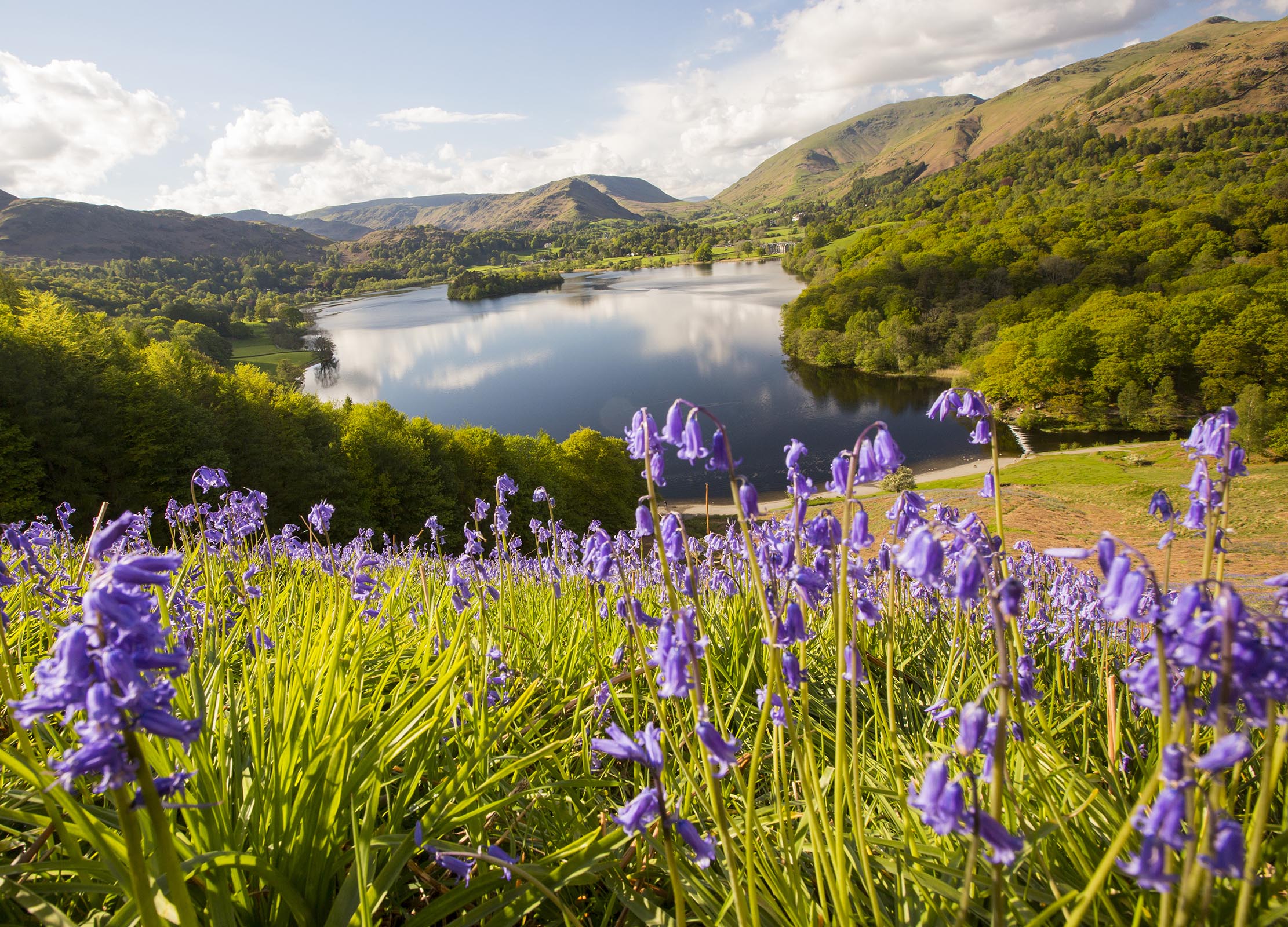
The emergence of a swathe of densely packed bluebells, forming a vivid electric-blue carpet underneath the canopy of a newly leafed woodland, heads nodding in the breeze, is one of the British countryside’s most eagerly anticipated sights, a sure sign that spring is here, and that summer is on its way.
Regularly voted as Britain’s favourite wildflower, Anne Brontë echoed the sentiments of many when she wrote ‘there is a silent eloquence/ in every wild bluebell/ that fills my softened heart with bliss/ that words could never tell’ (The Bluebell, 1839). A quintessentially British sight with nearly half of the world’s population of bluebells found on these shores, they usually flower from around mid-April to late May.
Looking at a glade packed with thousands of individual plants, it is hard to believe that the common bluebell is classified as an endangered species, one of the few native British flowers to be protected under the Wildlife and Countryside Act, 1981. Their protection was strengthened in 1998 when the trade in bulbs and seeds was criminalised, carrying fines of up to £5,000 per bulb.
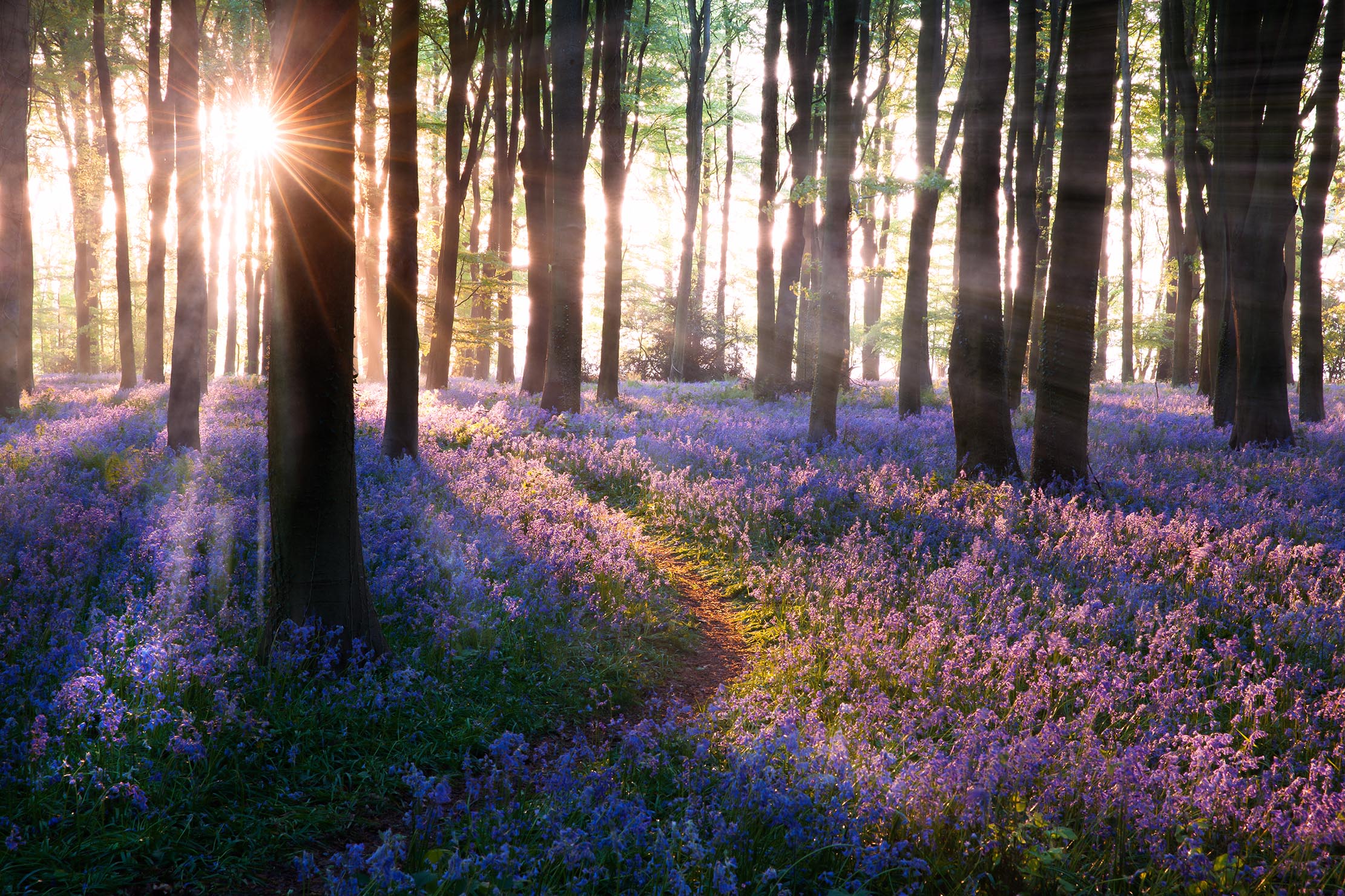
It can take between five and seven years for a seed to grow into a bulb and then flower. Flourishing in areas where the soil is unlikely to be disturbed, such as along shady hedgerows, in churchyards, and especially in woodlands, they are perennial and after flowering, their long leaves remain above ground until late into autumn. The bluebell then disappears, allowing its bulb to reenergise itself in readiness for the following spring. Their presence is an indicator that the woodland is ancient.
Apart from the loss of its natural habitat, the bluebell’s biggest existential threat is from its invasive rival, the Spanish bluebell, introduced by the Victorians in the mid-19th century as they were easier to cultivate. The two are relatively easy to distinguish.
The native bluebell, (Hyancinthoides non-scripta), has slender, tubular bells of a deep, purple-blue colour, occasionally pink or white, with a deeper central stripe on each petal. It has a long slender stem or scape tapering gradually to the tip which holds up to eight flowers on one side only, causing it to overbalance gracefully like a shepherd’s crook. The petals turn backwards in a curl, giving a dainty effect. Its pollen is creamy coloured.
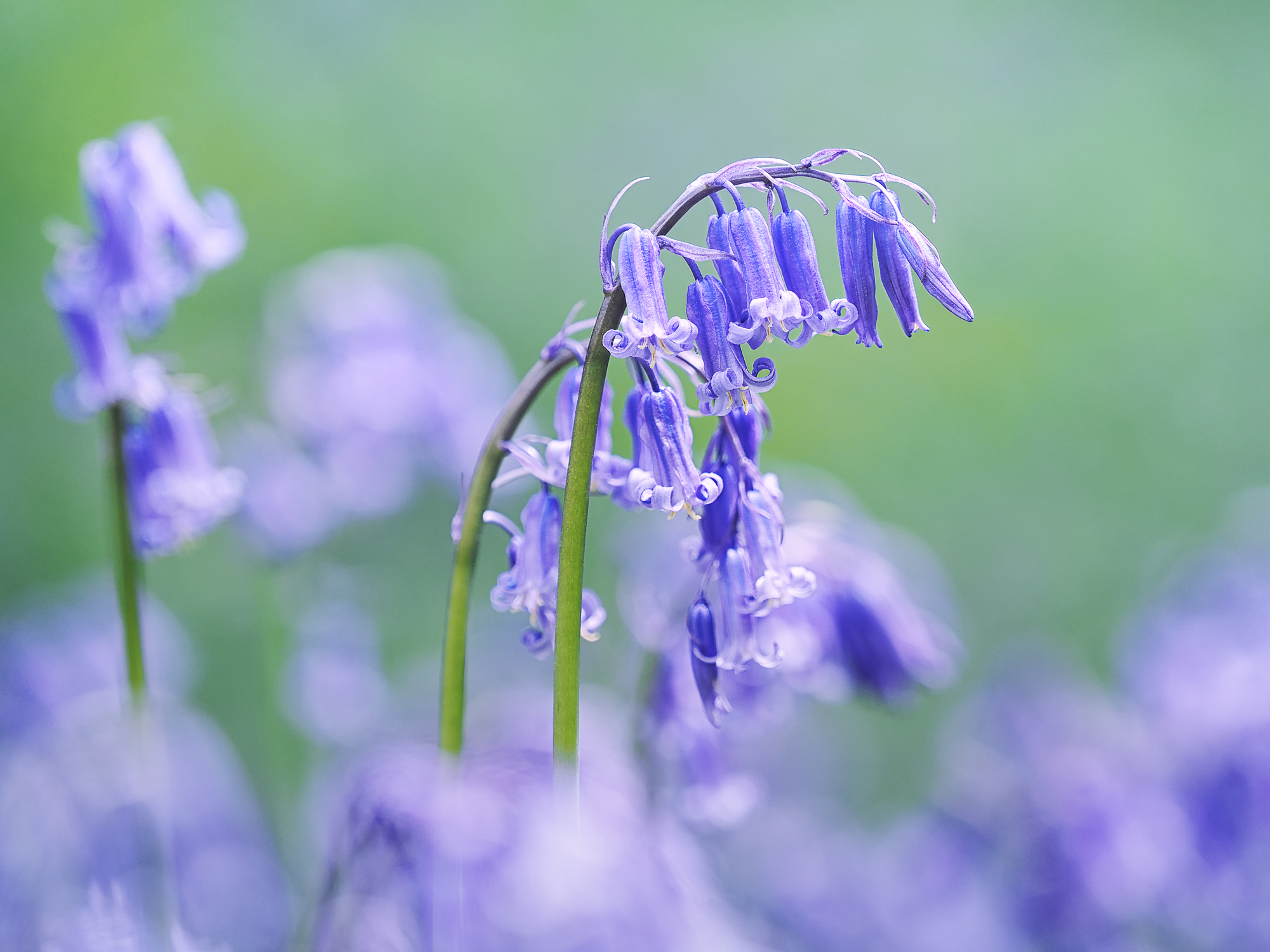
The Spanish bluebell (Hyancinthoides hispanica), is taller with broader leaves and produces considerably more flowers which appear on either side of the scape, giving it a more upright appearance. The flowers, pale blue in colour, are shaped like an open bell and the petals, which have a deeper blue stripe down the centre, have a gentler curl. Its pollen is blue or pale green.
Exquisite houses, the beauty of Nature, and how to get the most from your life, straight to your inbox.

The common bluebell has featured heavily in folklore. For the Victorians, keen students of floriography, the bluebell symbolised constancy, humility, and everlasting love. The truth would always be told if a wreath of bluebells was worn, while turning the flower inside out would win the heart of a true love. According to the Encyclopaedia of Folklore and the Occult Sciences (1852), good fortune was assured by picking a bluebell, chanting ‘bluebell, bluebell, bring me some luck before tomorrow night’, and slipping it into your shoe.
The bulbs are full of a viscid juice and are poisonous in their fresh state, at least for humans and most animals except, curiously, badgers. To consume them in large quantities could be fatal. Some folk traditions played on the flower’s inimical properties.
Bluebells were said to be used in witches’ potions. Nightmares could be warded off by placing bluebells under a pillow or hanging them above the bed. As faeries were said to hang their spells on the petals to dry, inadvertently brushing against them might unleash their magic or, at the very least, incur their wrath. So enchanting was a walk amongst bluebells that there was a risk of losing all sense of direction and being trapped in the woods.
Children who picked a bluebell were likely to be whisked away, never to be seen again, and many believed that picking the flowers and bringing them indoors was a harbinger of ill luck. Bluebells were used by faeries to summon meetings but to hear one ring was especially bad luck; it presaged your own death. Not for nothing were they known as Dead Men’s Bells.
They were also known, colloquially, as Wood Bell, Wild or Wood Hyacinth, Cuckoo’s Boots, Witches’ Thimbles, Lady’s Nightcap, Culverkeys, Fairy Flower, and Jacinth. Confusingly, as Margaret Baker pointed out in The Folklore of Plants (2013), ‘bluebell is the Scots’ name for harebell, while harebell is Shakespeare’s name for wild hyacinth and bluebell’.
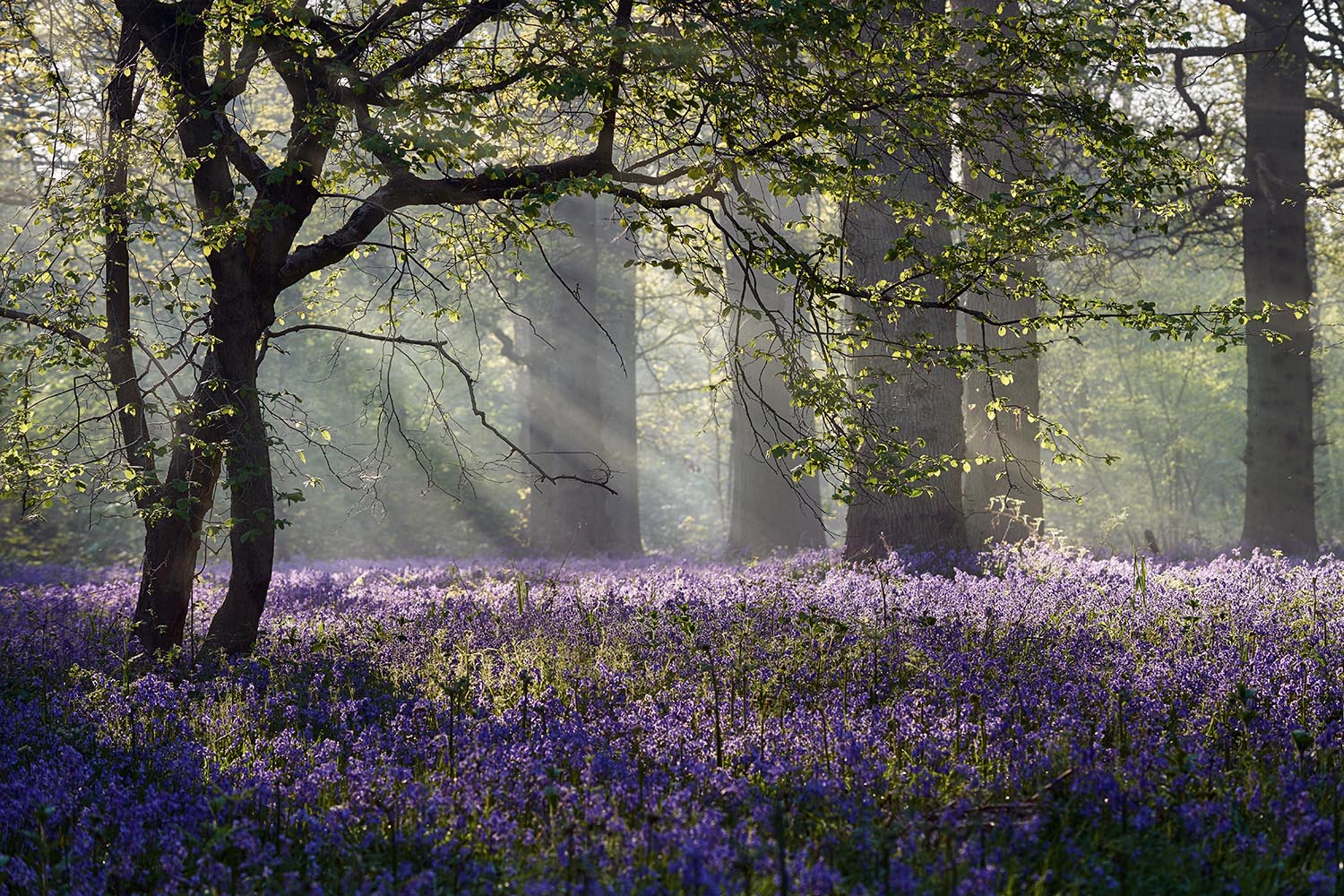
Herbalists valued bluebells for their diuretic and styptic properties, using them to treat spider bites and, according to Tennyson, snake bites as well as for dealing with leprosy and tuberculosis. Although scientists have established that bluebells contain at least fifteen biological active compounds used to repel insect and animal pests, modern medicine has rather turned its back on their healing properties.
Tudor botanist William Turner’s New Herbal (1568) suggested that bluebell bulbs were put to other uses; ‘the boyes of Northumberlande’, he wrote, ‘scrape the roote of the herbe and glew theyr arrows and bokes wyth that slyme that they scrape of’. John Gerrard also referred to this practice in his Herball (1597) when describing the ‘blew Harebels or English Jacinth…which spring up naked or bare stalks laden with many hollow blew flores of a strong sweet smell stuffing the head’. His description of the bulb noted that it was ‘full of slimy glewish juice, which will serve to set feathers upon arrows instead of glew or to paste books with; whereof is made the best starch next onto that of Wake robin roots’.
Geoffrey Grigson in A Herbal of All Sorts (1959) took an empirical approach to discovering whether bluebell glue was effective. In April 1945, finding that the covers of the notebook into which he had transcribed the passage from Turner were coming adrift, he ‘pasted in paper at each end with scrapings from a bluebell bulb; and then wrote inside the cover ‘REPAIRED WITH BLUEBELL GLUE: APRIL 1945’’. Thirteen years later, after using the notebook ‘a good deal’, his ‘two paper hinges were as firm and fast as ever’.
'Of course,’ he concluded, ‘the bulb stores up starch; and the starch does the sticking’. However, such is the confusion over nomenclature that, as the Eternal Magpie points out in a post written in her blog after extensive archival research, it is far from clear whether Turner and Gerard were talking about the bluebell or the English Hyacinth. Grigson’s experiment, though, suggests that bluebells could well have been used.
That glue made from bluebells was used to bind books and attach feathers to arrows is now an established ‘fact’ on the internet. Secondary sources also suggest that starch sourced from the bulbs was used in the 16th century to stiffen ruffs and by the Victorians to starch their collars.
When next I gaze upon a swathe of bluebells, I will remember that these beautiful flowers also played a small part in disseminating knowledge and maintaining the country’s military prowess, another reason, perhaps, why they are so closely associated with St George.
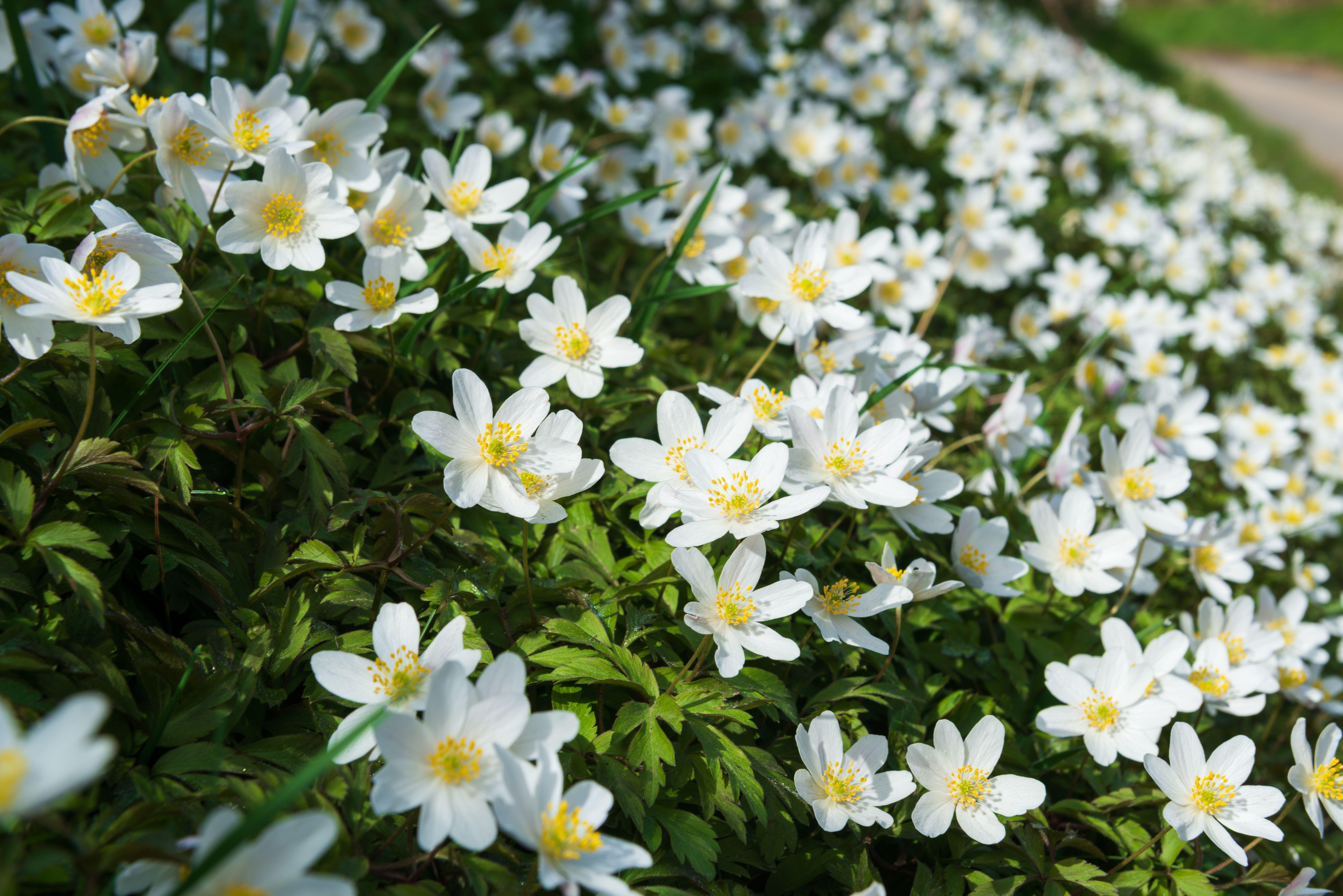
Wood anemones: The sun worshipping wildflowers that spread that a glacial pace
Country mouse wanders through the bluebells.
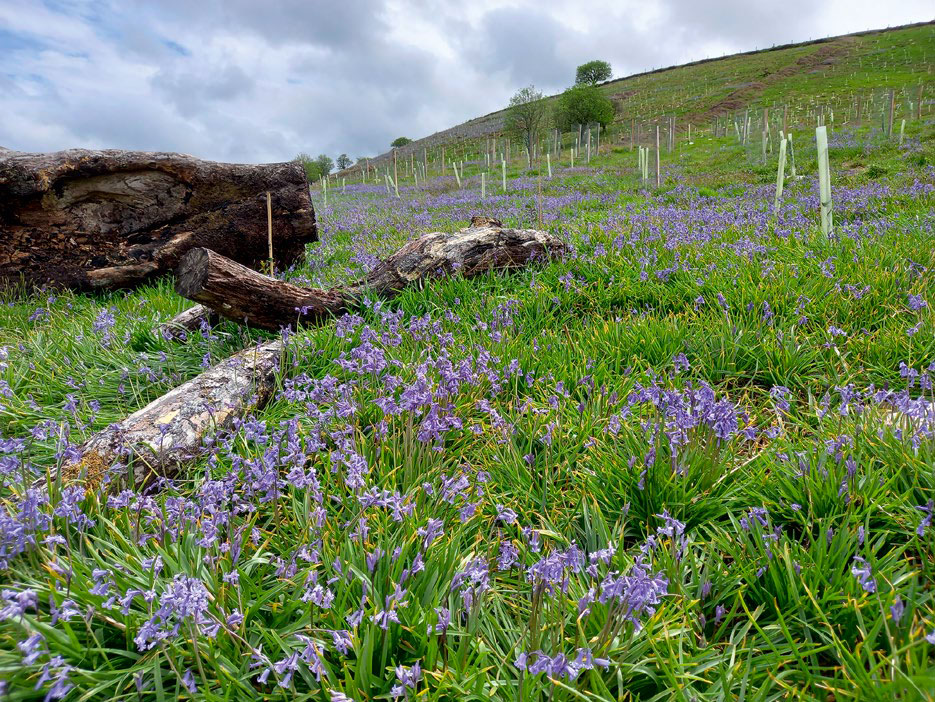
Credit: Exmoor National Park Authority
The mysterious sea of bluebells that appeared on Exmoor
A remote part of Exmoor has burst into springtime colour for the first time in centuries.
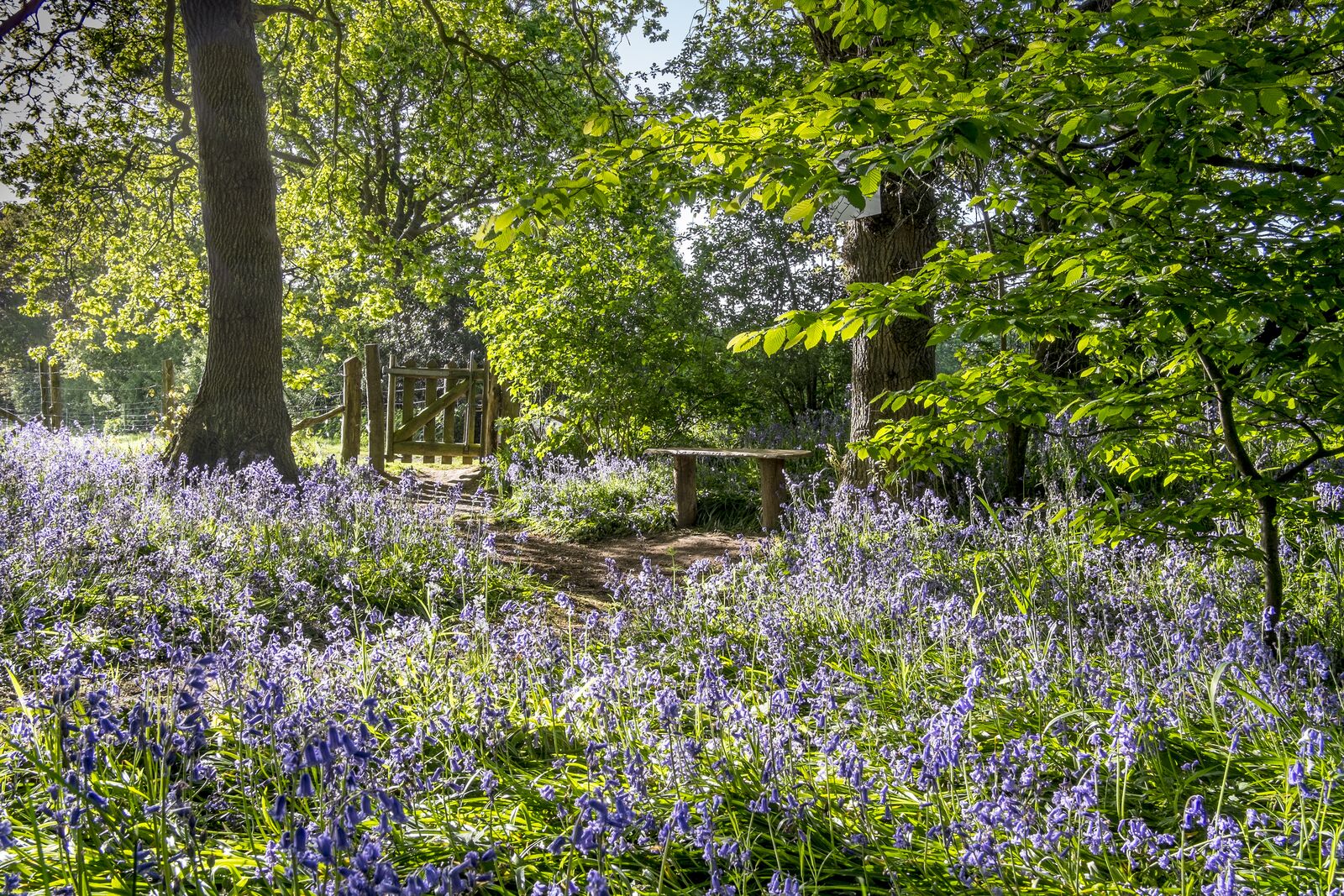
How to enjoy bluebells from home — and how to plant them to enjoy your own in future years
Bluebells are among our most welcome annual visitors, writes Toby Keel in celebrating these joyous spring flowers.
After graduating in Classics from Trinity College Cambridge and a 38 year career in the financial services sector in the City of London, Martin Fone started blogging and writing on a freelance basis as he slipped into retirement. He has developed a fearless passion for investigating the quirks and oddities of life and discovering the answers to questions most of us never even think to ask. A voracious reader, a keen but distinctly amateur gardener, and a gin enthusiast, Martin lives with his wife in Surrey. He has written five books, the latest of which is More Curious Questions.
